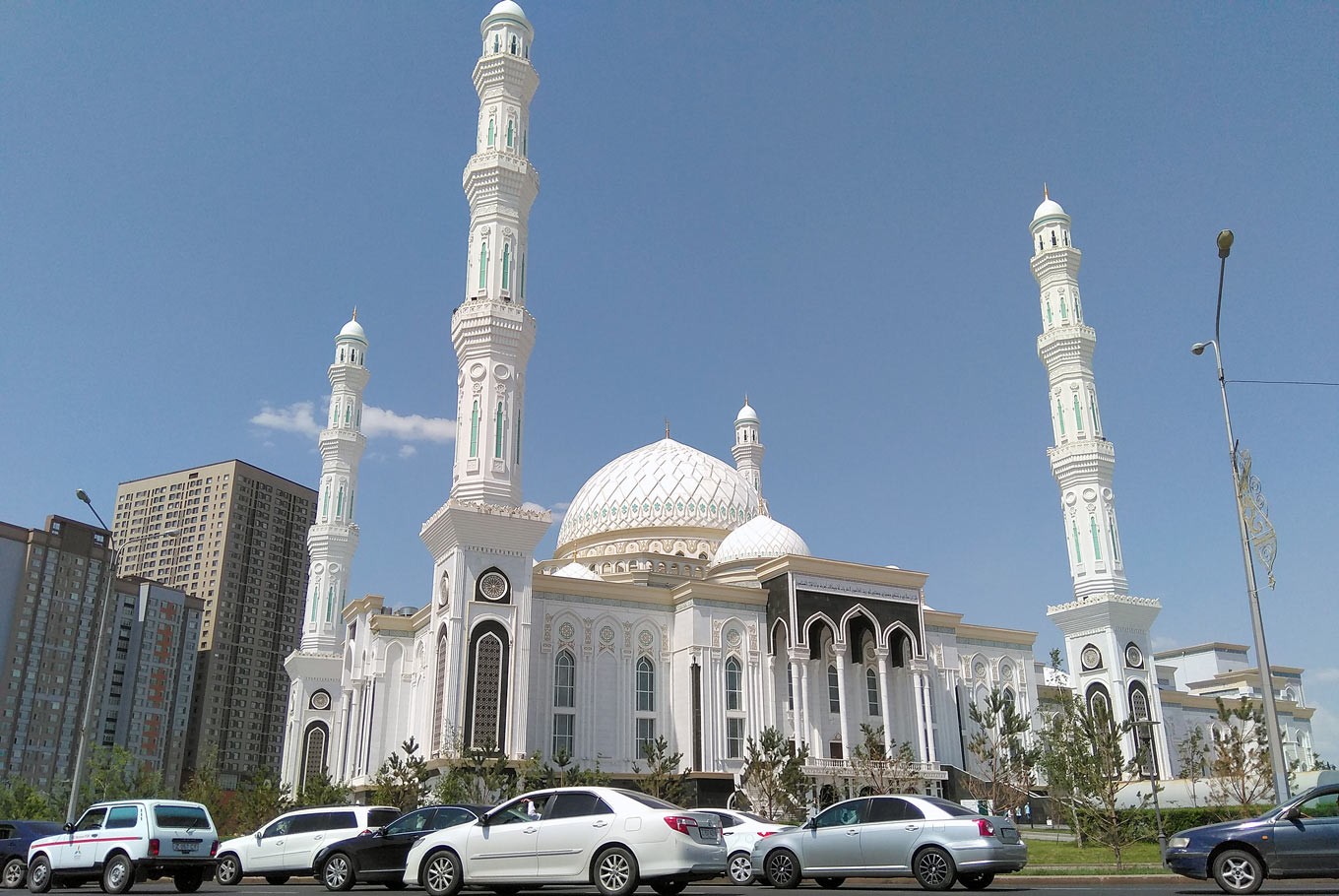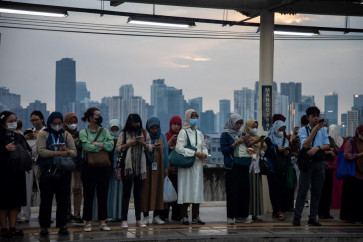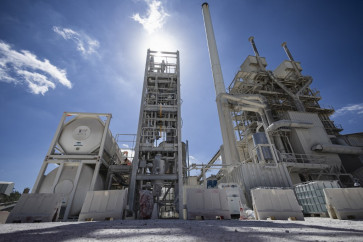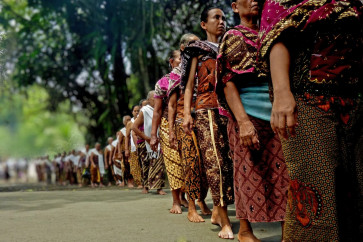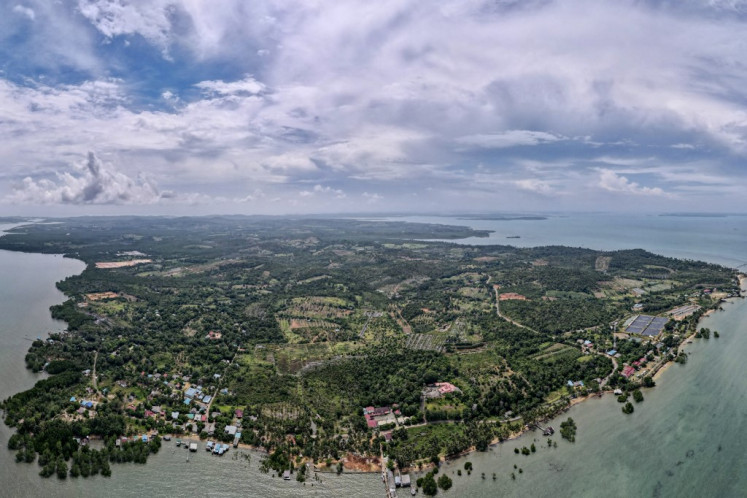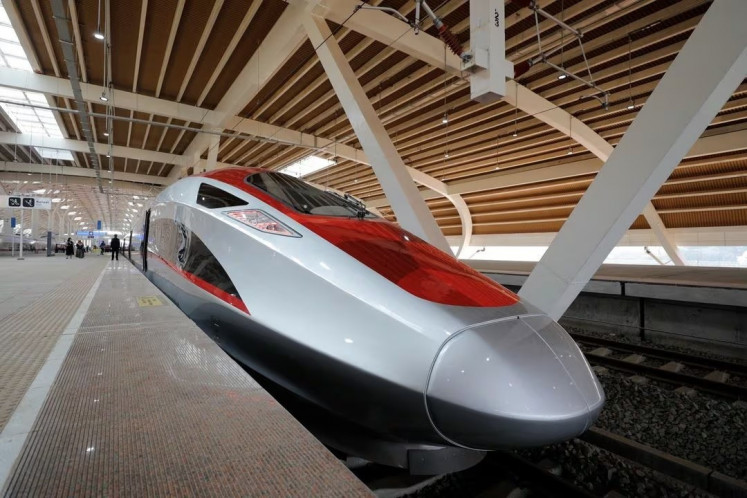Popular Reads
Top Results
Can't find what you're looking for?
View all search resultsPopular Reads
Top Results
Can't find what you're looking for?
View all search resultsAstana, a city of modern structures
Many call it Nur Alem, others name it the Expo.
Change text size
Gift Premium Articles
to Anyone
T
he spherical building in the heart of Astana, the capital city of Kazakhstan, has become a new attraction for local residents and — soon — for people from neighboring countries.
The complex is visible from afar at night as the spherical building, which boasts a diameter of 80 meters and a height of 100 m, releases lights into the sky.
The development of the sophisticated complex highlights the area’s rapid transformation from merely a deserted steppe a few years ago, into a modern city.
“Most parts of this area was steppe. We build this city almost from scratch,” said Magzhan, a man who works at a government institution.
On one afternoon in June, under the scorching sun, dozens of residents flocked to the expo complex to get a glimpse of the exhibition area that had been inaugurated a few days before. The spherical building, that would soon become an icon of Astana, houses an exhibition showcasing renewable energy generation.
On the ground floor is an area where visitors can learn about the culture, tradition and geographical conditions of Kazakhstan. Welcoming visitors are a series of modified pictographs showing the centuries-old tradition of the Kazakh people. Each pictograph holds a piece of copper, which, when touched, would trigger the pictographs to release lights and produce colorful animation. It’s like reading a comic book with extra animation; entertaining for adults and children alike.
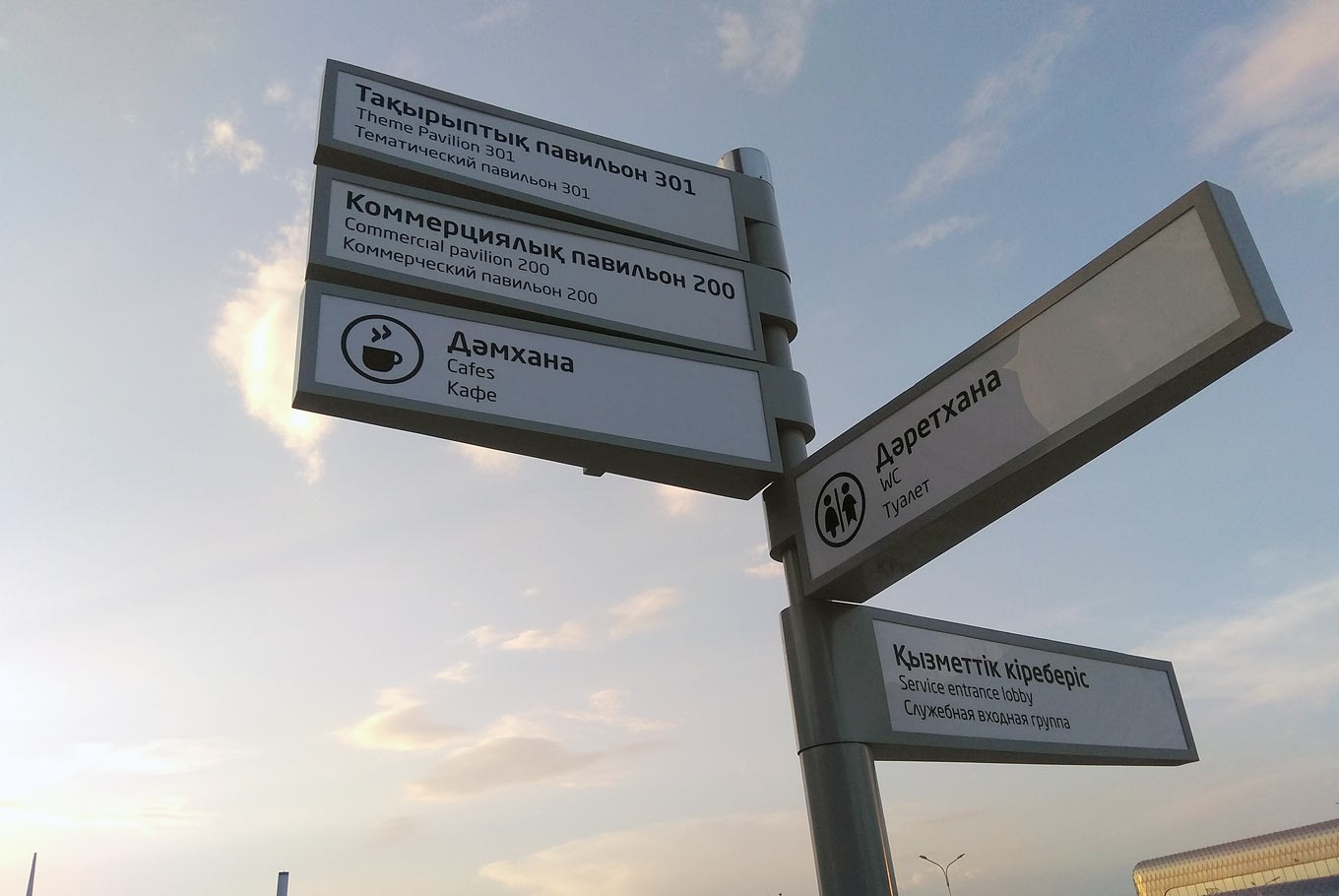 Show me the way: A direction pole at the expo complex.(JP/Kurniawan Hari)
Show me the way: A direction pole at the expo complex.(JP/Kurniawan Hari)
Moving further inside, visitors learn the geographic conditions of the Central Asian country through a series of short, animated videos projected on the wall, showing the nature of Kazakhstan in four seasons: snowy winter, fresh spring, hot summer and the cold breeze of fall.
After viewing the presentation on Kazakhstan’s history, tradition and nature on the first floor, visitors can then take an elevator to the top floor of the building, where they can enjoy the view of the capital city.
Read also: Learning to tolerate Judaism in Kazakhstan
In the building, which will house the city’s Museum of the Future, visitors can learn about power generation based on renewable sources of energy, such as the sun, biomass, wind, water and kinetic energy.
Interestingly, each section was designed based on the type of energy source. For example, in the section about hydro power plants, one side of the wall portrays a waterfall and the water flows through the entire surface of the floor. Meanwhile, in the section about biomass power plants, the floor is made up of glass panels filled with various kinds of rice and beans.
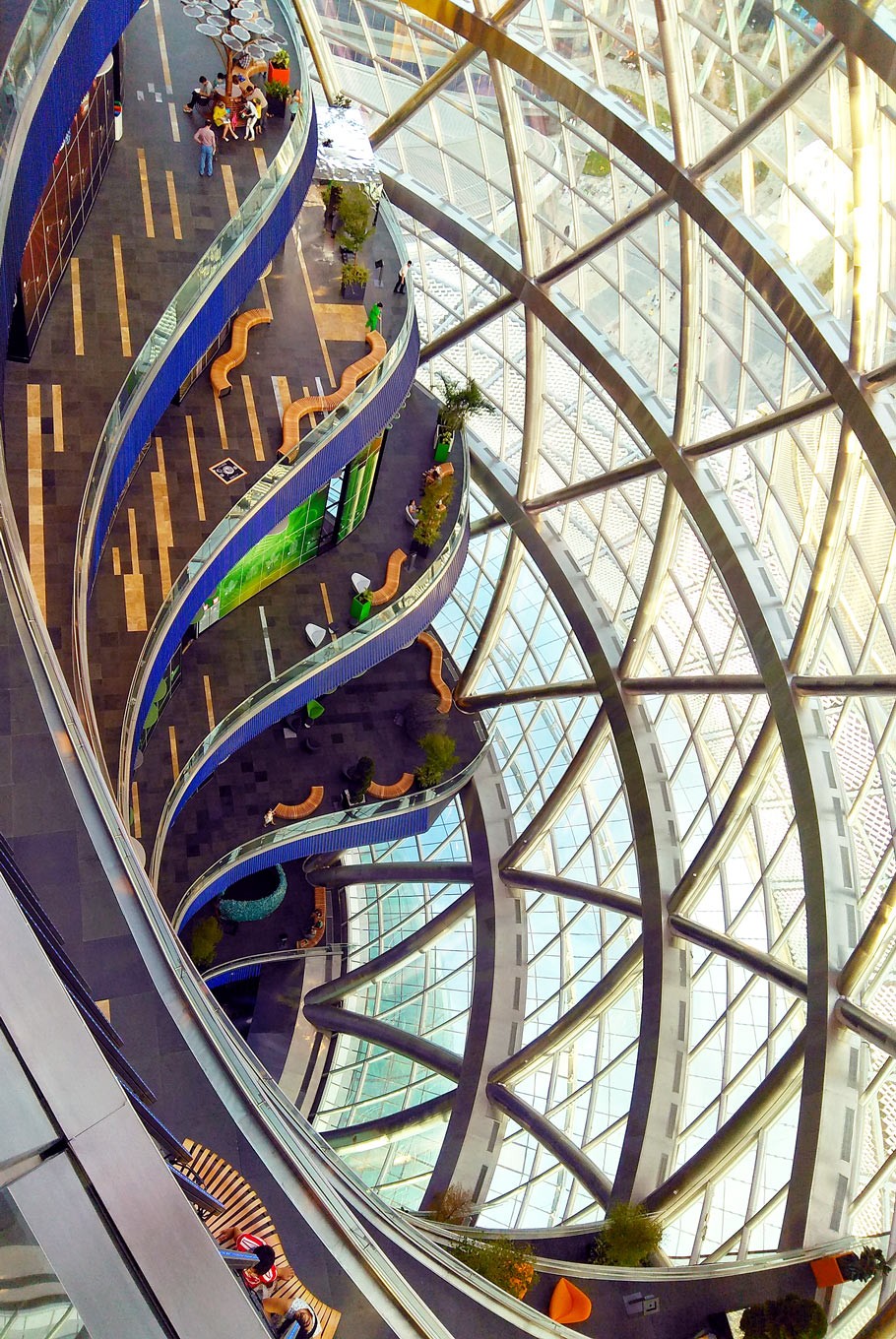 Harmony in structure: A downward view from the top floor of Nur Alem.(JP/Kurniawan Hari)
Harmony in structure: A downward view from the top floor of Nur Alem.(JP/Kurniawan Hari)
At certain parts of the area, visitors can also learn about the solar system, including how much heat the sun releases to warm up the Earth.
Nur Alem is not the only modern construction in Astana that will soon become an attraction in the city; the Bayterek Tower is sure to lure both local and foreign tourists alike. In Kazakh, bayterek means “tall poplar,” referring to the tree.
Read also: Expo 2017 Astana: Kazakhstan’s epitome of structural reform
Standing 97 m in height, the tower was designed to represent 1997, the year in which Astana was named the capital city of Kazakhstan. On top of it lies a golden sphere that symbolizes an egg nestled among tree limbs. According to the Astana official guide, the tower does not only provide a unique attraction for tourists, but it also serves as a symbol, where visitors can go inside the “egg” of happiness and beginnings as told an age-old local folktale.
On one Saturday morning, dozens of people were seen lining up to go to the top of the tower and see views of the city from the observation deck. Meanwhile, a spacious park filled with vibrant and colorful flowers can be found on the ground level.
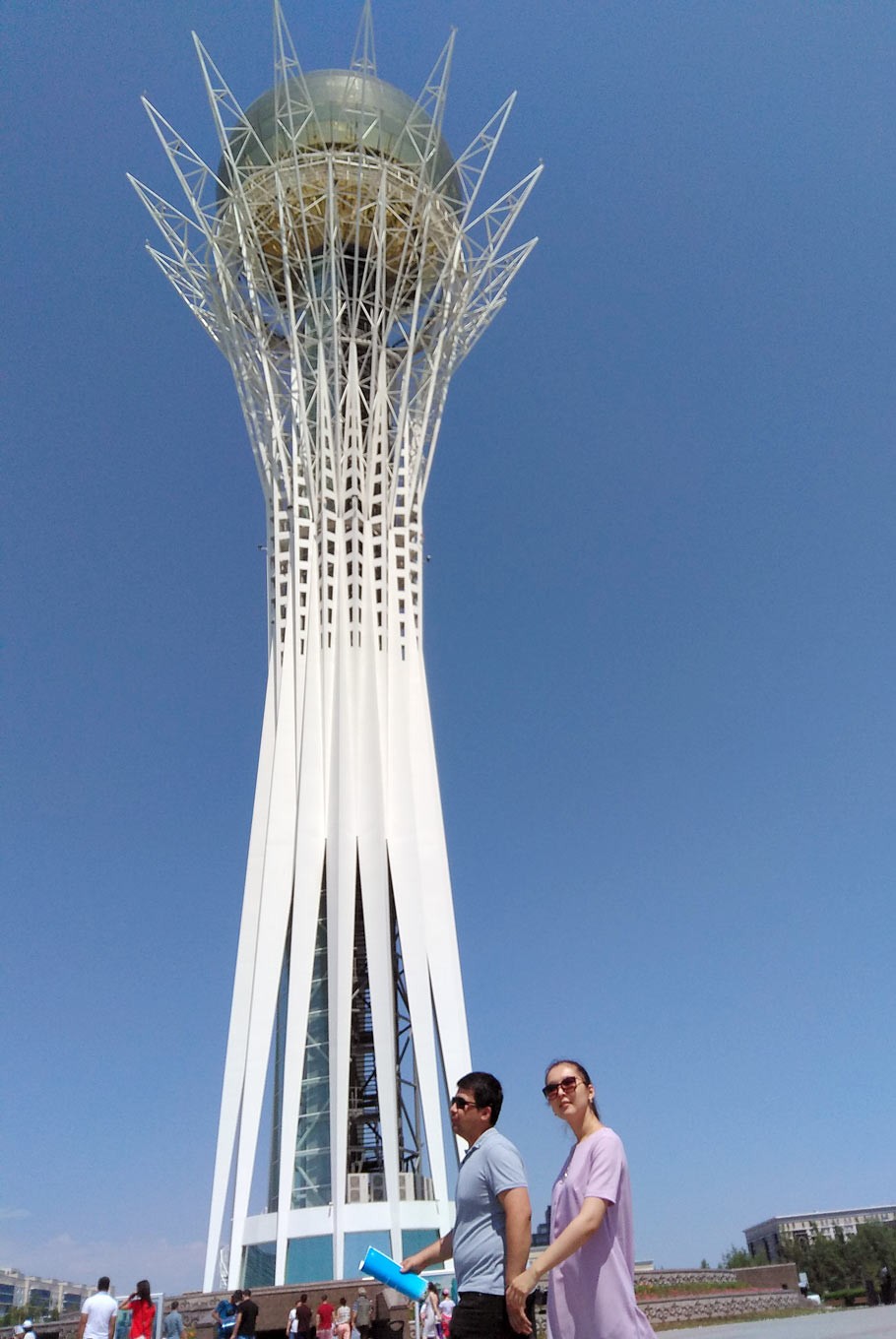 Iconic landscape: A couple walks past the Bayterek Tower.(JP/Kurniawan Hari)
Iconic landscape: A couple walks past the Bayterek Tower.(JP/Kurniawan Hari)
Visitors of Astana may be surprised to find a huge pyramid. Unlike the pyramids of Egypt that were built from stone, the one in Astana is made of glass. This is the Palace of Peace and Reconciliation, the peak of which is decorated with 130 painted doves that symbolize the nationalities living in Kazakhstan. The building has become a symbol of religious tolerance.
Another modern building to visit in Astana is the Palace of Independence, where visitors can marvel at women’s jewelry, traditional garments, weapons and armors of ancient warriors, musical instruments and hand-woven carpets.
The Palace of Independence recently hosted the Astana Economic Forum, during which state leaders and economists discussed the future of the world economy following the growing trend of protectionism.
“This is fantastic. Astana with all of this modern construction is fantastic,” said Jose Luis Barcelo, a Spanish journalist.
With all the modern buildings and facilities, Astana wants to show the world that the city is developed despite its young age and is more than prepared to host major international conferences.

